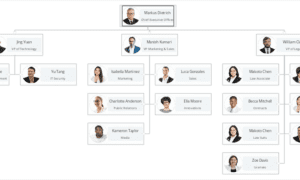As Roberto Boligan points out, in 2024, developing a successful software monetization strategy will require three key components: market analysis, user experience optimization, and model selection. Begin by identifying your target audience and researching competitors to determine what works. Recognize their needs in order to provide a product that they will appreciate. Choose a price plan that makes sense for your market after that. To reach your audience, concentrate on providing an excellent user experience and employ successful marketing techniques. For the best outcomes, track performance over time and make necessary adjustments to your strategy.
Understand Your Market
The first step in creating an effective software monetization strategy is to comprehend your target market. First things first, figure out who will be using your software, or your target audience. Roberto Boligan says that understanding your target market will help you design your offering to suit their unique requirements and tastes.
Analyse your rivals after that. Examine and analyse the pricing structures of other programs in your industry. This helps you find opportunities or gaps in the market and provides you with insight into what is working for them.
Lastly, identify the needs of the market. Know the needs and desires of your prospective clients and the issues they are trying to solve. To make sure your software meets customer expectations and differentiates itself from the competition, this entails obtaining feedback and investigating market trends.
With the help of these steps, you will gain a better understanding of your market and be able to create a monetization strategy that will appeal to users and make your software profitable.
Choose the right monetization model
Optimising software revenue requires careful consideration of the right monetization strategy to choose.
The following are some well-liked choices to think about:
Subscription-Based: Users pay a regular, monthly or annual fee. Because it offers continuous value, this model can aid in customer retention and generate a consistent income.
Freemium: Provide basic features for free, but charge for premium features. This strategy draws in a large audience and turns a portion of those interested in advanced features into paying clients.
One-Time Purchase: Charge a single price for your software. Although this model is simple for customers to use and generates revenue right away, it might limit opportunities for long-term revenue growth.
Advertising: Include advertisements in your program to bring in money from sponsors. If you have a sizable user base and are able to provide options for targeted advertising, this model works well.
In-app purchases: Within the app, users can purchase extra features or content. In addition to improving the user experience, this model can generate recurring income from users who wish to increase their usage.
Develop a Pricing Strategy
The creation of a pricing strategy is essential to the profitable software industry. Here are key approaches to consider:
Value-Based Pricing: Set your price based on the perceived value your software provides to customers. This means understanding what customers are willing to pay for the features and benefits your software offers.
Cost-Plus Pricing: Calculate the total cost to develop and maintain your software, then add a profit margin. This ensures you cover expenses and make a profit, but it may not always reflect the value perceived by customers.
Competitive Pricing: Price your software competitively by aligning with or slightly undercutting the prices of similar products in the market. This approach can attract price-sensitive customers and help you stand out from the competition.
Tiered Pricing: Offer various pricing levels for different features or user groups. This allows customers to choose a plan that fits their needs and budget, potentially increasing your revenue by catering to diverse segments.
Choosing the right pricing strategy involves balancing costs, customer value, and market conditions to maximise profitability and customer satisfaction.
Implement Effective Marketing Strategies
To successfully market your software in 2024, focus on these key strategies:
Content Marketing: Create engaging blogs, videos, and other content to attract and inform potential customers. Quality content helps build trust and showcases your software’s value.
Social Media: Promote your software on platforms where your target audience is active. Share updates, tips, and customer success stories to engage users and drive interest.
SEO: To improve visibility, make sure your website and content are optimised for search engines. Use relevant keywords, meta descriptions, and quality backlinks to improve your search rankings and attract organic traffic.
Email Marketing: Implement targeted email campaigns to nurture leads and turn them into customers. Send personalised messages, updates, and promotions to keep your audience engaged and encourage conversions.
By combining these strategies, you’ll create a strong online presence, reach more potential customers, and boost your software’s success in a competitive market.
Measure and Analyze Performance
Evaluation and measurement of performance are essential if you want to make sure your software monetization plan works. Start by tracking sales and user engagement with analytics tools. This will help you determine where improvements are needed and how well your software is working. Additionally, obtain user satisfaction insights and pinpoint areas for improvement by routinely collecting and acting upon customer feedback. By combining these methods, you can improve the user experience, hone your strategy, and make data-driven decisions. This continuous assessment guarantees that your software stays competitive and meets market needs.
Closing Remarks:
A successful software monetization strategy in 2024 requires, as Roberto Boligan concluded, selecting the right monetization model, creating an effective pricing strategy, and having a deep understanding of your market. Make providing an outstanding user experience your top priority, and use astute marketing strategies to connect with your target audience. Monitor performance continuously and make adjustments in response to data and feedback. Using this strategy will guarantee that your software stays profitable, valuable, and competitive in the changing market.



































